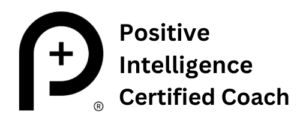
Hi folks!
This Monday (May 15, 2017) I started a new round of my 30-Day Mindfulness Meditation Challenge. I’m already chewing on changing the name of this program the next time I offer it. We all agreed that “Challenge” makes the program sound hard, when the truth is that starting the morning blanketed in calm energy and community is not only easy, it’s absolutely beautiful!
What’s hard is making the commitment to show up for yourself every day to build any new habit. But guess what? Meditation supports healthy habit-building of all kinds, so it’s a great place to start! I haven’t decided yet when I’ll offer my meditation habit kick-start program again, but I’ll keep you posted.
In the meantime, I thought it would be fun to share with you an example of the type of questions that bubble up during our Q&As. I write a takeaways email every single day of the program to recap what we talked about, so that those who have to hop off the call after the 10-minute meditation also benefit from the discussion. Here’s just one question and my answer to it, pulled from yesterday’s takeaways email.
Q: How do you use mindfulness to counteract when something or someone has made you really angry? How do you bring yourself back from that?
A: I’m so mindful that I never feel angry. NOT!!!!!
The first step is to notice the strong emotion (in this case anger) and try to pause before reacting. Give yourself a second to notice the feeling and how it manifests physically in your body. Mindfulness is not about getting rid of negative emotions; it’s about learning to respond to them more skillfully. So don’t judge yourself negatively for getting angry. I loved hearing the Dalai Lama say that even he gets angry and yells sometimes! Anger is part of the normal human experience. It’s how much time we spend there that we can control, as well what we learn from the situation.
Also pay attention to the nature of the feeling. Is it anger alone? Or is there fear, or perhaps anxiety, or frustration mixed in there as well? Again, these feelings manifest slightly differently in our bodies. When we separate them out into smaller packages it can lighten the load a bit.
Take a breath, hearing the sound of the breath and feeling it in your body. Engaging your physical senses will turn down the volume of the language center that’s telling you all sorts of stories and trying to get you to react. JUST SAY NO to the immediate response. Nothing requires an immediate response when someone has made you angry. NOTHING. An immediate response is needed if someone is in danger, but you being mad does not fall in that category.
When someone says something that makes you mad, their words are often coming from a place of ego, pain, or fear within themselves. It feeds their ego and pain identity if they can get other people to feel as bad or as vulnerable as they do. If you don’t react as they expect, you don’t feed them. A little bit of space allows you to respond with presence, rather than with unconscious reactivity.
When I feel reactivity coming on, I ask myself, “How important is this, anyway?” Is it only important to my ego, or does it impede my purpose in life? If action can be taken, take it, but from a place of presence, grounded in the reality of the present moment, not based on an imagined future scenario that may or may not be true. The same goes for basing a reaction on a past memory — JUST SAY NO!
After you’ve taken action–if you can take action, which a lot of times you just can’t–let the rest of it go. I know, easier said than done.But now you know that engaging the senses (walking outside—barefoot for an even stronger impact, taking a bath, aroma therapy, or, in my case, gardening, as examples) gives our mind another job, shifting its attention away from those drama-induced thoughts swirling in your language center. Sensory activities help to bring us back to the here and now.
Anger, like all emotions and thoughts, is temporary. Those stress hormones surging through your body will dissipate in just 90-120 seconds if you don’t keep replaying the thought that triggered them.
Note: I’ve learned even more about the neuroscience behind these dynamics during my Search Inside Yourself teacher certification training. So fascinating! Can’t wait to share it in the upcoming program. If you’ve been considering exploring mindfulness meditation, perhaps now is the time! Check out the awesome testimonials here https://damselwings.com/30-day-mindfulness-meditation-challenge/
***
If you enjoyed today’s post and are not yet a subscriber, please join my Readers Circle via the sign-up box in the right margin and receive my free ebook Six Playfully Mindful Strategies to Beat Procrastination and Boost Productivity. You’ll also receive updates on my book Blooming into Mindfulness, weekly blog posts, and photography, speaking engagement, and workshop news. Email is much more reliable than social media in getting information to you in a timely fashion, so sign up to make sure you’re in the loop! (I promise not to share your address or send you spam.)
And if you know someone else who might benefit from an extra dose of calm in their lives, please spread the word! Social media likes and shares are always appreciated.
Finally, if you find typos anywhere on my site, I’d be grateful if you let me know. I hate typos! Contact me so that I can correct the error. Thank you!


